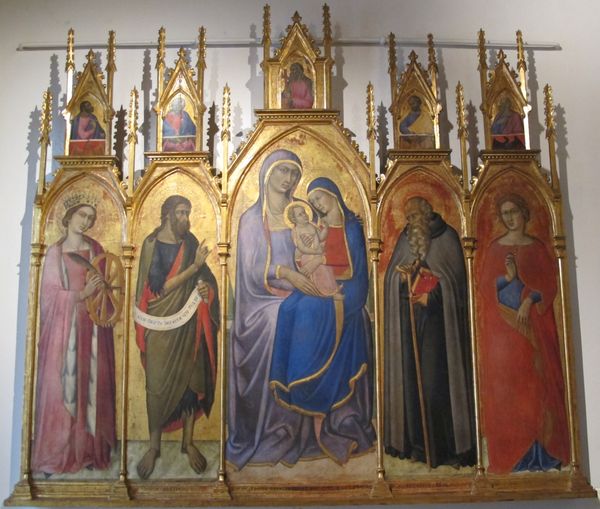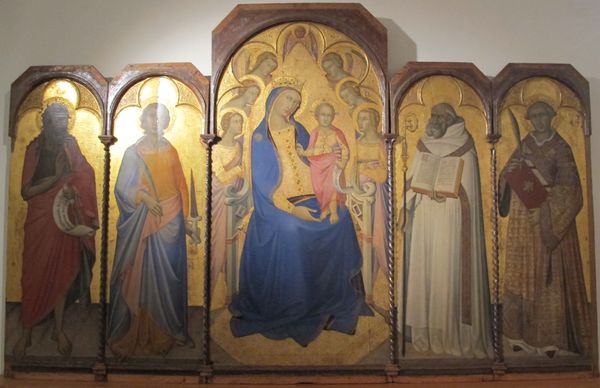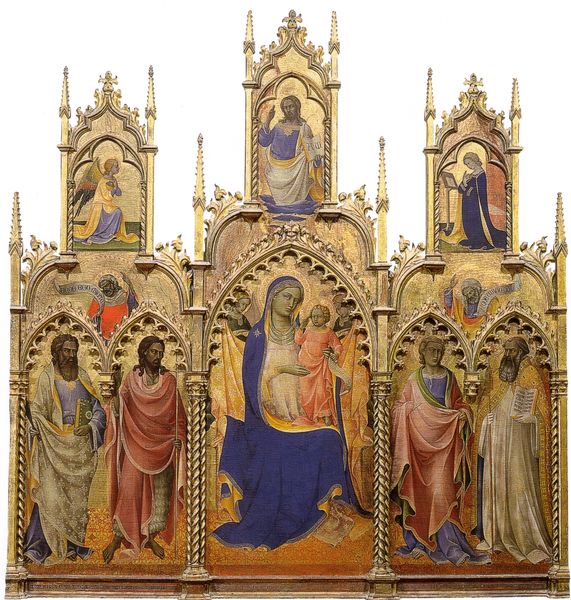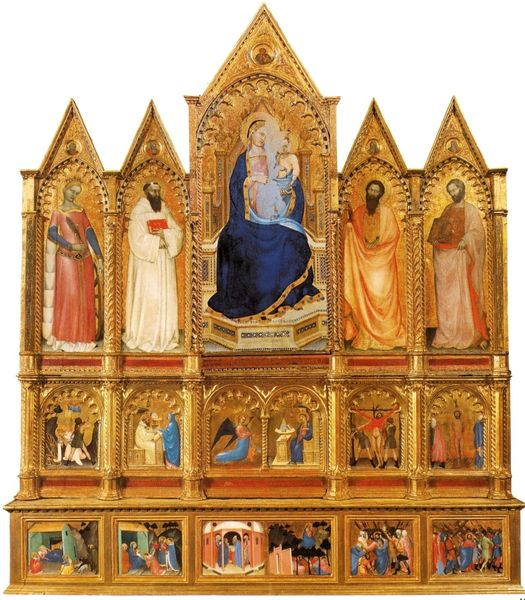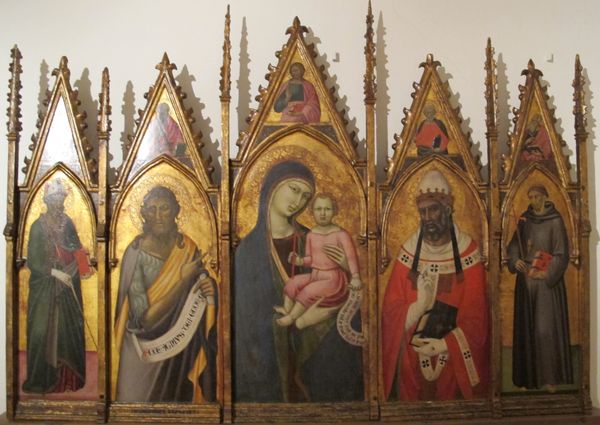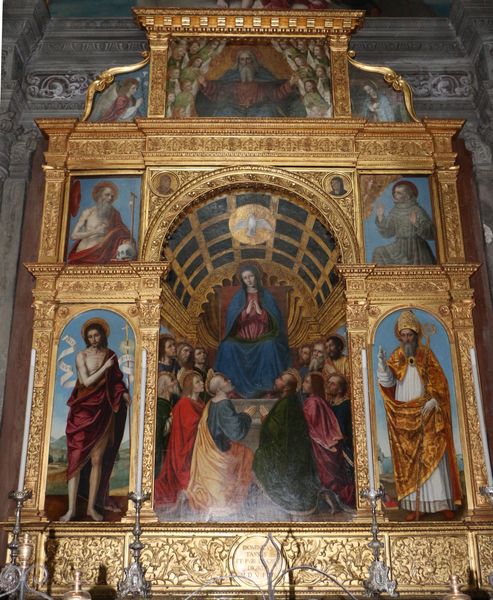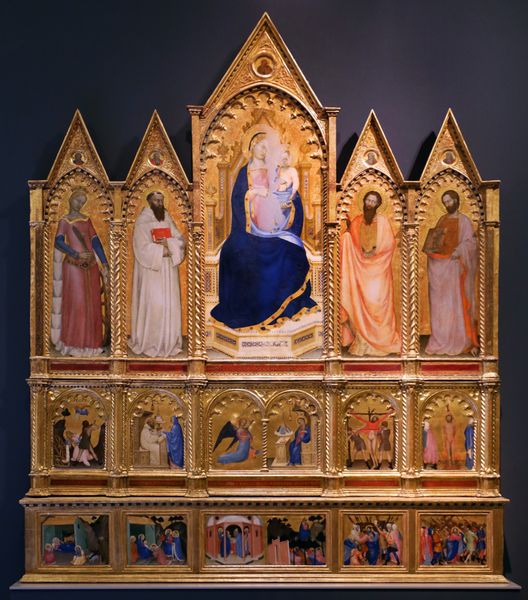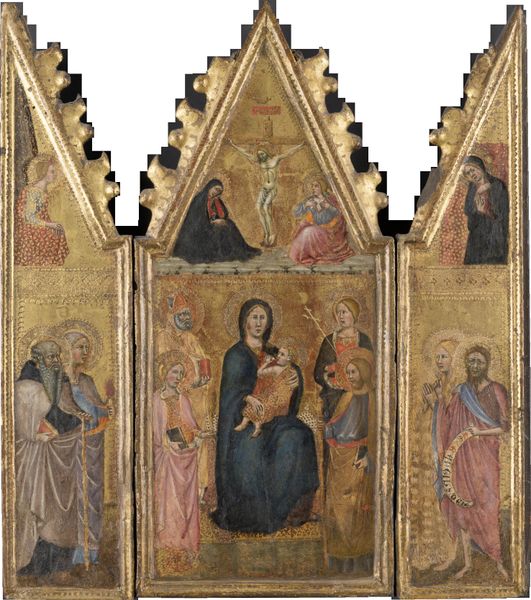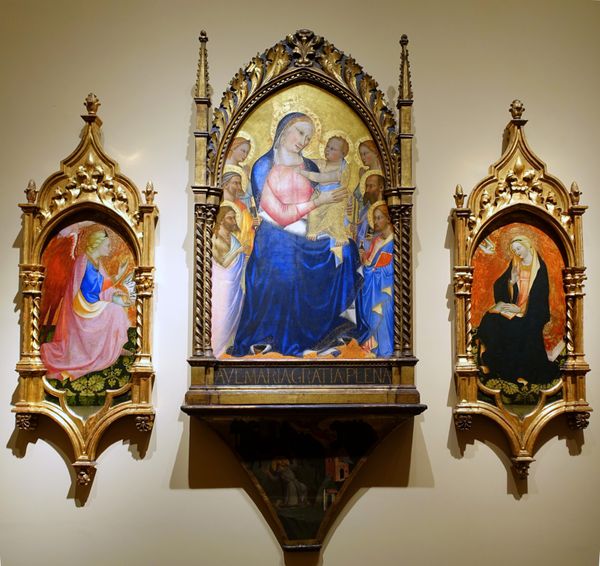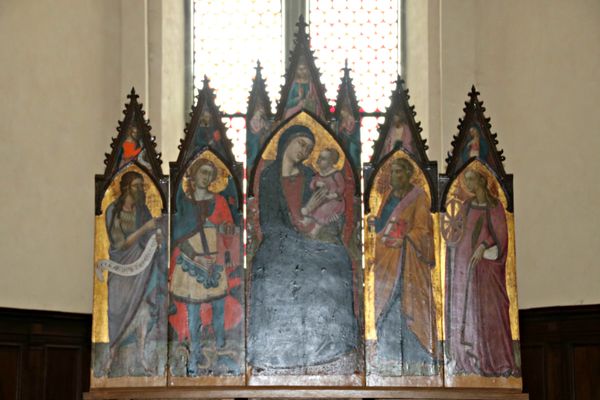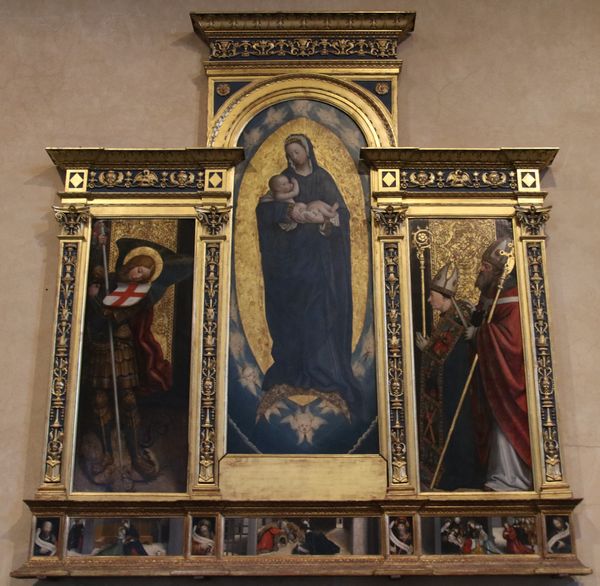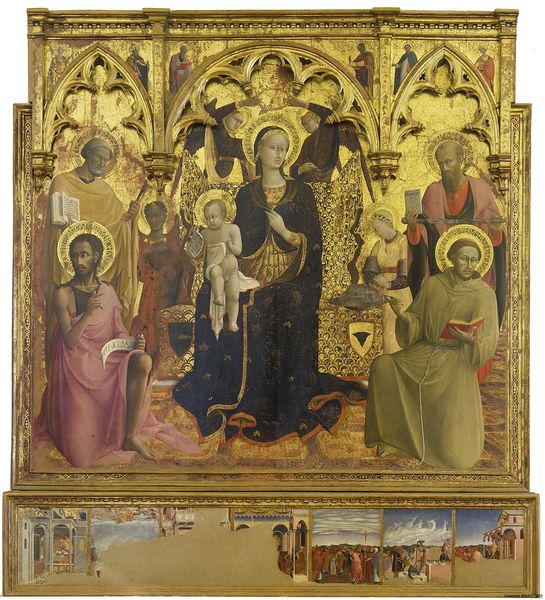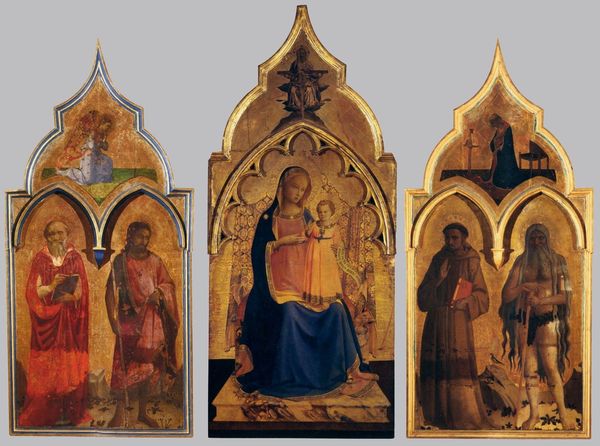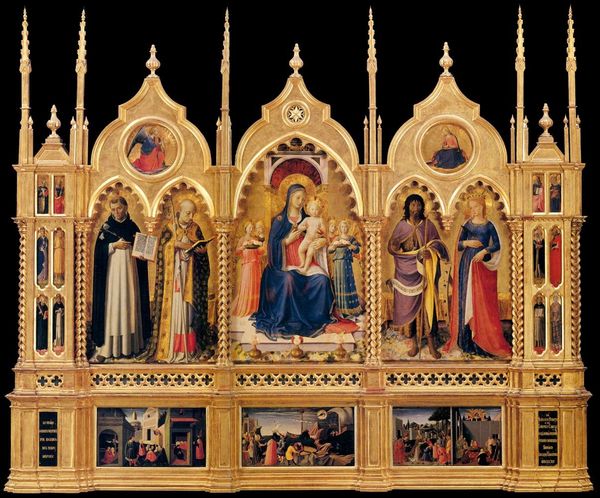
#
water colours
#
ship
#
show home
#
holy-places
#
traditional architecture
#
handmade artwork painting
#
oil painting
#
underpainting
#
showhome propping
#
modern period home
#
painting painterly
#
watercolor
Copyright: Public domain
Curator: Here we have Giovanni da Milano's "Da Spedale Della Misericordia," dating back to 1370. The artwork employs watercolor. Editor: It strikes me as a radiant, almost gem-like object. The profusion of gold leaf creates such a visually rich surface. It is immediately captivating with its aura of spirituality. Curator: Absolutely. Consider the significance of gold in the 14th century. Its cost reflected immense value, obviously. But it also speaks volumes about the commissioning context for the piece, it would likely have been expensive, suggesting wealthy patrons and the intention to create an object that physically embodied their faith. The handwork involved in applying it – the very specific processes of gilding, and burnishing would have been meticulously carried out. Editor: And beyond just value, the symbolism is equally crucial. Gold, here, speaks directly to divinity, to the heavenly realm. It transforms these scenes, elevating the Madonna and Child at the centre. The ship imagery too, perhaps not immediately obvious, serves as a vehicle for souls and their journey into the afterlife, something crucial given that "misericordia" hints to a focus on piety, devotion, and care. Curator: You're drawing a fine point about symbolism here, however, the material means that enabled that symbolism should also be remembered. Looking at these hand-mixed watercolours, what are we really seeing? The natural pigments ground into mediums that needed specific climactic conditions to apply, and craft guilds passing these secret recipes, we glimpse at pre-industrial material history and the community who made art like this possible. Editor: A fascinating thought. It also highlights the inherent paradox—these material objects attempt to capture the immaterial, a timeless, and spiritual narrative using worldly elements. Even today, doesn’t this altarpiece continue to function as a mnemonic, prompting the viewer to contemplate stories of redemption and grace, just as it likely did for worshippers centuries ago? Curator: You are right. It reminds us to consider the interconnectedness between these visual expressions of belief and tangible skills, expertise and modes of living from the late 1300s, a world mediated through labour, consumption, and craft that goes way beyond just surface appearances. Editor: Exactly! Appreciating both the symbolism and material provides us with a richer understanding of this devotional piece, inviting us to remember its historical significance.
Comments
No comments
Be the first to comment and join the conversation on the ultimate creative platform.
